Pigeons, also known as “rock doves,” “rock pigeons,” and “common pigeons,” are widespread birds commonly viewed as pests. Domestic pigeons were bred from wild rock doves, and escaped domestic individuals have increased feral pigeon populations in cities worldwide.
Non-native populations have been introduced in many locations, and thrive in urban settings where some other wildlife fails. These birds were originally found throughout Europe, parts of northern Africa, and western Asia. Read on to learn about the pigeon.
Description of the Pigeon
Wild, non-domesticated pigeons are bluish-gray in color with two black bars on each wing and iridescent green and purple necks. Other color variations of “pigeons” are actually domesticated birds that have escaped and become feral. Their eyes are usually bright orange, but may also be red or gold colored. they have a whitish patch, known as a cere, on the ridge that connects their beak to their face.
Interesting Facts About the Pigeon
Though widely seen as pests, these birds are actually quite interesting. They have some very intriguing behavior patterns and adaptations.
- Homeward Bound – Rock doves are incredible navigators, and are capable of finding their way home even if they are blindfolded and released in a distant location. Despite this ability, most of the time these birds do not leave their local areas.
- War Hero – This ability to return home from virtually anywhere gives pigeons great use as messengers. During both World Wars these birds were used to transport messages for the U.S. Army Signal Corps, and were capable of much swifter communication than a rider on horseback. Because of this they have saved lives and provided vital information!
- Darwin & the Pigeons – No, we aren’t talking about a new up and coming band. After his voyages on the Beagle, Charles Darwin continued to keep and breed pigeons. Move aside finches, pigeons aided much of Darwin’s theories on evolution as well.
- Long Lived – Though wild and feral birds live only 2 years on average, some individuals have lived much longer. One individual bird, a retired U.S. Army Signal Corps messenger, named Levi, lived to be 31 years old! In contrast, the oldest recorded wild bird was 6 years old.
Habitat of the Pigeon
Naturally, these birds thrive in cliff side settings, particularly sea cliffs. Introduced and feral individuals can live in cliff settings, but have found a perfect niche in urban and city living.
Cities provide them with perfect scavenging opportunities, as humans produce lots of garbage. Not only do humans produce lots of garbage, but they also produce even more in an urban and city setting with high populations!
Distribution of the Pigeon
These birds naturally live in southern Europe, western Asia, and northern Africa. In Europe they are found in both the western and southern areas, and in Asia they are found in western and southern areas.
They have also been introduced to a wide number of regions. Their non-native range consists of the rest of Europe, other parts of Asia, southeast Australia, southern Africa, parts of South America, parts of Canada, and the entire United States and Mexico.
Diet of the Pigeon
Opportunistic feeding is one of the keys to this bird’s success. Some common food items include grains and seeds, vegetables, fruits, berries, insects, snails, earthworms and more. In cities they will consume virtually anything edible. Human garbage provides a wide variety of foods and they take advantage of whatever they find.
Pigeon and Human Interaction
Most humans view these birds as dirty pests, but in reality their capacity for spreading disease is actually quite low. There is a small chance of contracting a few fungal or bacterial infections from contact with pigeon feces, but these are highly uncommon.
These birds can contract a number of diseases, including West Nile Virus and avian influenza, but they do not appear to be able to transmit it to other animals. Humans will retaliate by killing these birds, and they will be hit by cars, but they are not otherwise threatened by human activity.
Domestication
Rock doves are the origin of domestic pigeons, and this process happened over the course of thousands of years. Selective breeding has produced a wide variety of colors, patterns, and decorative feathers. Homing pigeons, also known as carrier pigeons, provided invaluable message transmission during a number of wars.
Does the Pigeon Make a Good Pet
Pigeons actually make good very good pets, provided that you choose the domesticated kind. Always choose healthy birds and responsible breeders.
Pigeon Care
When purchasing birds always inspect the housing conditions to ensure it is clean and birds look healthy. Avoid birds with dull or damaged plumage, eye or nose discharge, and any signs of injury or lethargy. Commercial pigeon feed can be purchased, and vitamins can be added to the water source to provide any extra nutritional needs.
Behavior of the Pigeon
Because these birds are relatively helpless, and quite susceptible to predation, they remain in flocks very frequently. In large groups a single bird is much less likely to be targeted, and the movement of many animals can confuse predators. Some of the birds in a flock are producers, and locate the food sources. The others are scroungers, and join in on the feeding after the producers have located food.
Reproduction of the Pigeon
Reproduction can happen at any time of year, especially in areas where food is plentiful. It is, however, much more common in spring and summertime. Their nests are built in cliff faces as well as ledges and roofs of buildings.
The female lays two eggs, and both parents incubate those eggs for 17 – 19 days. Baby pigeons are called “squabs,” and are fed crop milk that is produced by the parents. After approximately 30 days the squabs will learn to fly and become self sustaining.
Beliefs, Superstitions, and Phobias About the Pigeon
These birds are present in both Egyptian Hieroglyphics and Mesopotamian cuneiform tablets. In fact, these historical references are how we know that pigeons were domesticated at least 5,000 years ago! Humans have such a large impact on this species that it is nearly impossible to know what their true original range was and if they were introduced into their “native” areas by human means.

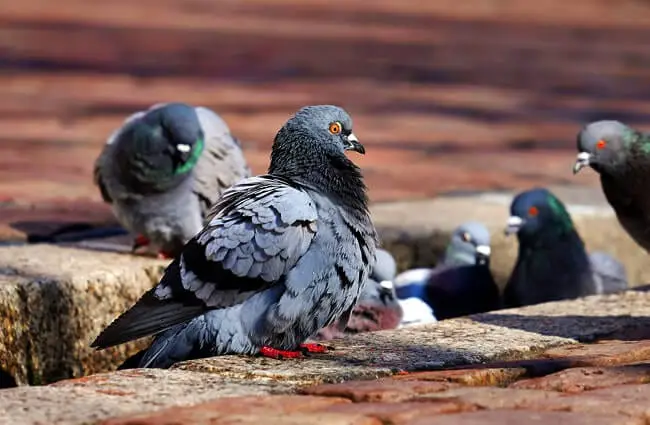

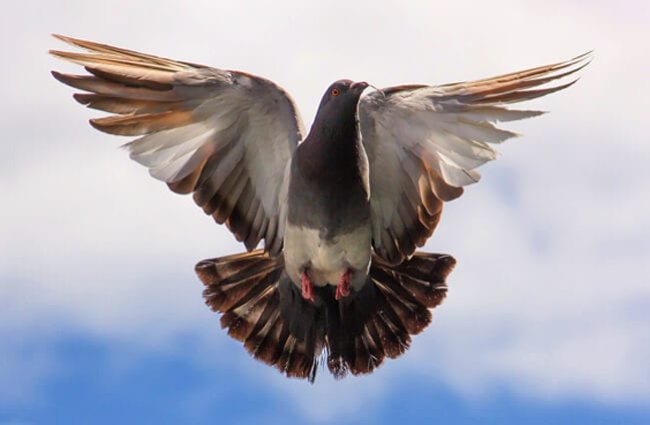

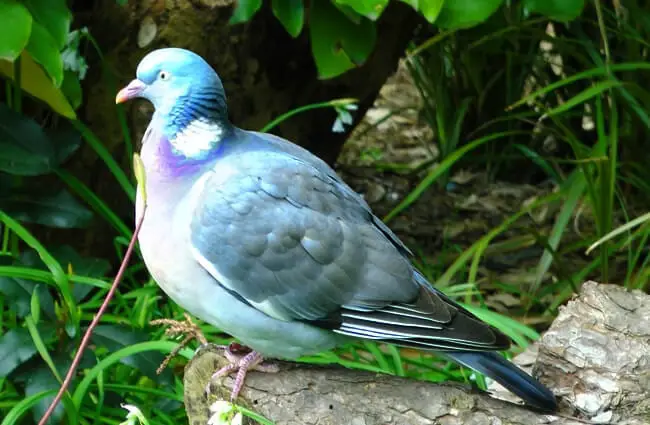
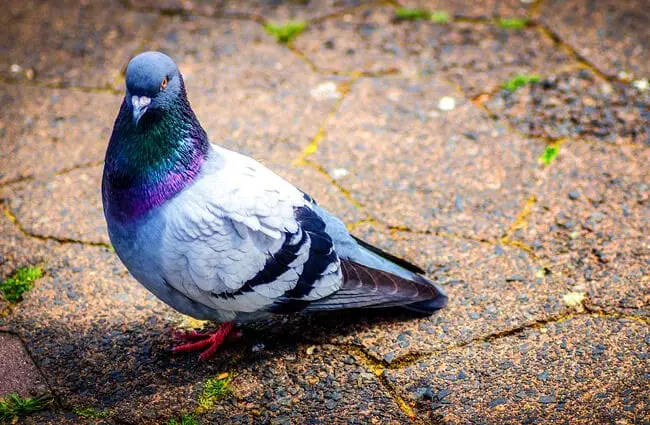

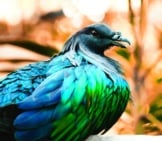

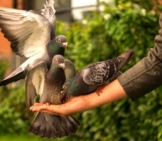
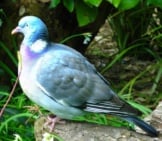
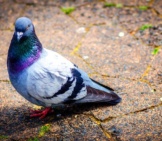
![Red Angus Closeup of a beautiful Red Angus cowPhoto by: U.S. Department of Agriculture [pubic domain]https://creativecommons.org/licenses/by/2.0/](https://animals.net/wp-content/uploads/2020/03/Red-Angus-4-238x178.jpg)












![Red Angus Closeup of a beautiful Red Angus cowPhoto by: U.S. Department of Agriculture [pubic domain]https://creativecommons.org/licenses/by/2.0/](https://animals.net/wp-content/uploads/2020/03/Red-Angus-4-100x75.jpg)

